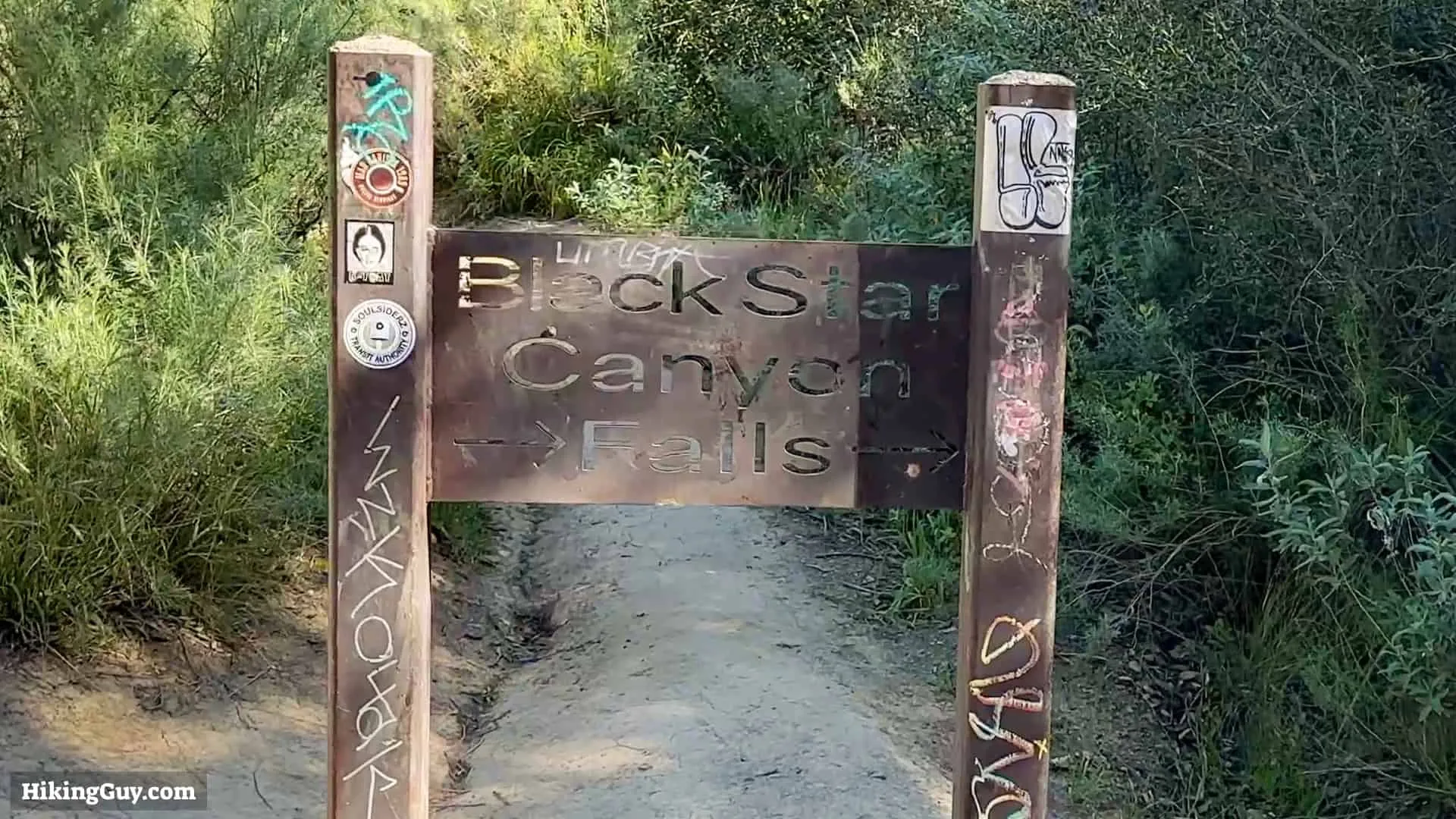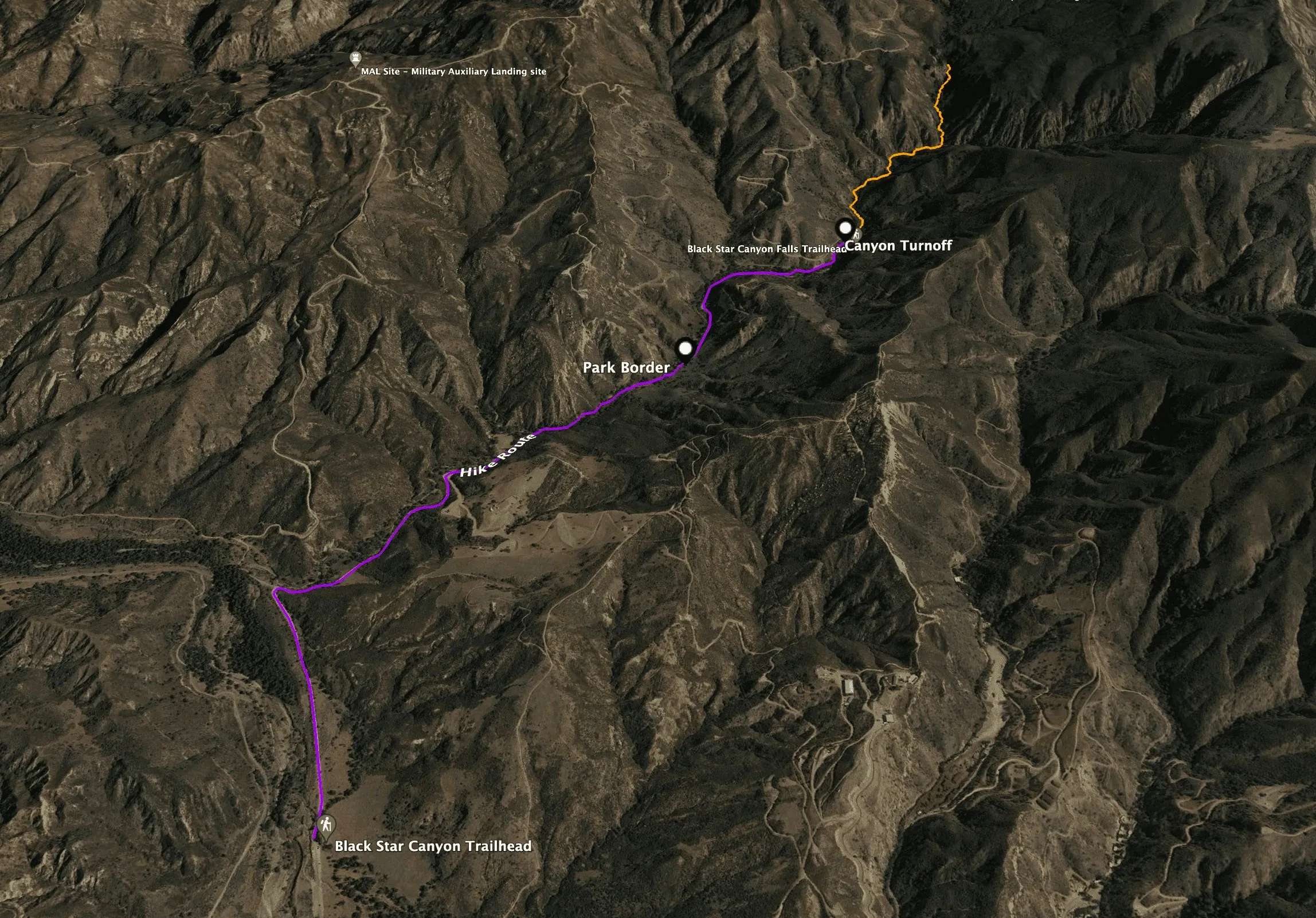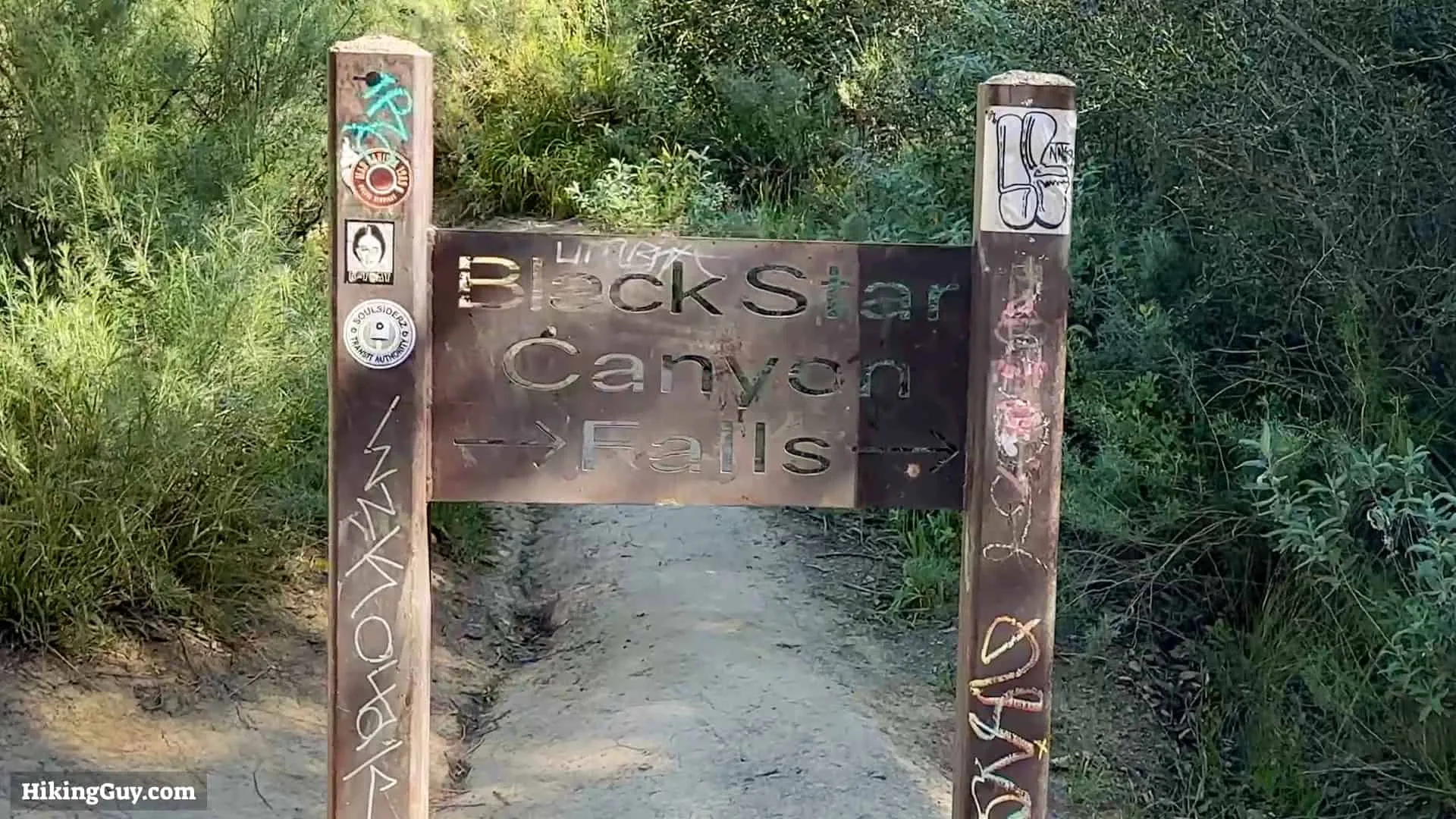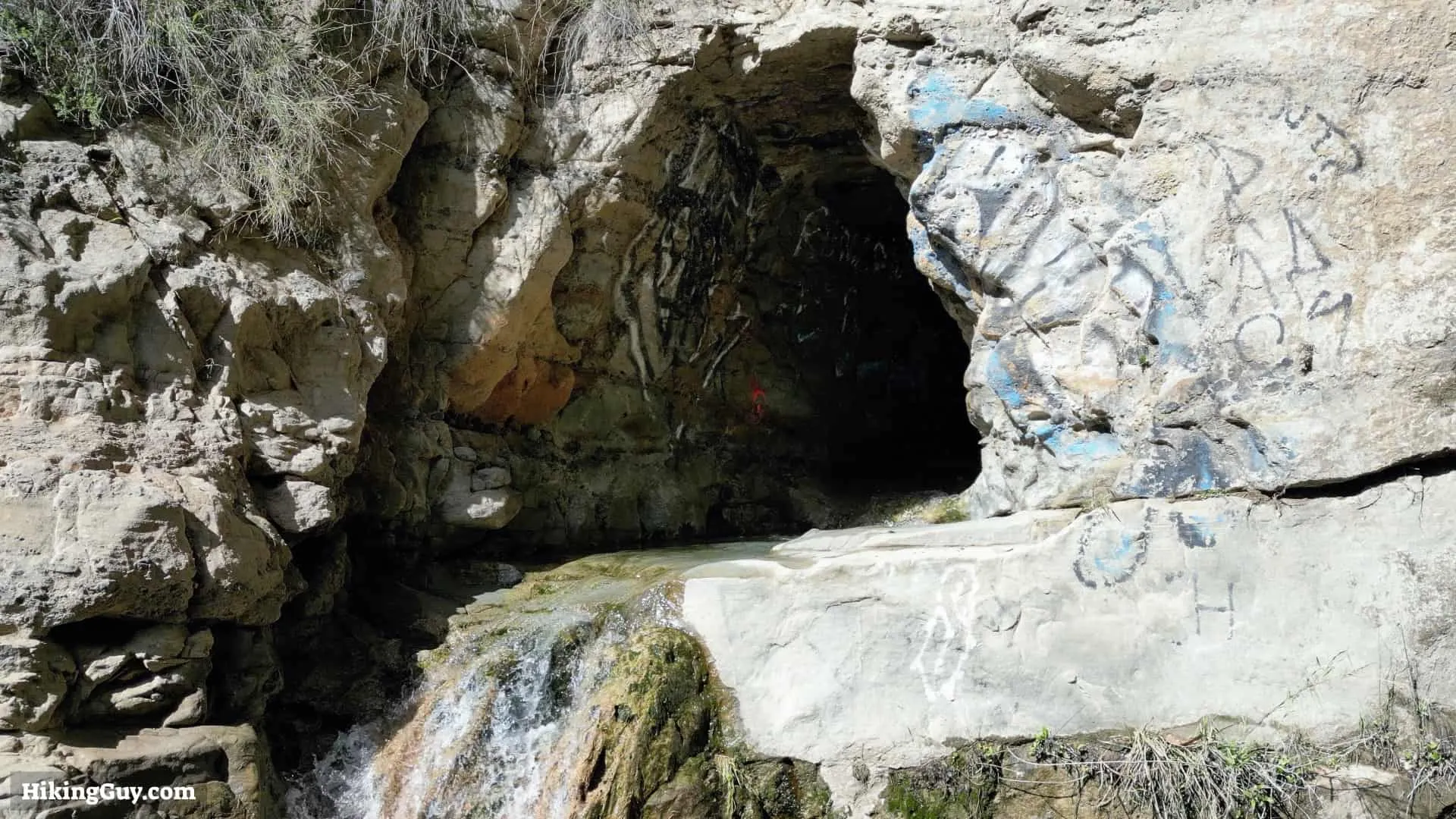
How Hard is it to Hike the Black Star Canyon: Complete Difficulty Guide 2025
If you're wondering how hard is it to hike the Black Star Canyon, you've come to the right place. As someone who's tackled this challenging Orange County trail multiple times, I'll share everything you need to know about this rewarding yet demanding adventure. From my personal experiences to essential gear recommendations, this comprehensive guide will help you prepare for one of Southern California's most talked-about waterfall hikes. Welcome to Wilderness Paths, where we explore the trails that test your limits.
Trail Overview and Difficulty Assessment

When people ask me how hard is it to hike the Black Star Canyon, I always start with the numbers: 6.7 miles round trip with approximately 830 feet of elevation gain. However, these statistics don't tell the whole story. Having completed this hike over a dozen times in various conditions, I can confidently say that the difficulty lies not in the distance or elevation, but in the technical nature of the final section.
The trail begins deceptively easy with a flat, wide dirt road that lulls many hikers into a false sense of security. For the first 2.5 miles, you'll walk along what feels like a casual countryside stroll through Black Star Canyon's historically significant landscape. This section requires minimal effort and provides a gentle warm-up for what's to come.
The real challenge begins when you leave the dirt road and descend into the creek bed. Here, the question of how hard is it to hike the Black Star Canyon becomes much more complex. The final mile transforms from a simple walk into a technical scramble requiring four-limb movement over boulders, multiple creek crossings, and careful route-finding through dense vegetation laden with poison oak.
Most experienced hikers rate Black Star Canyon as moderate to difficult, not because of cardiovascular demands, but due to the technical scrambling required. I've seen athletic individuals struggle with this section while watching older, more experienced hikers navigate it with ease. The key is understanding that this isn't your typical trail hike – it's more like outdoor rock climbing combined with creek exploration. Similar to other challenging hikes like the Devil's Kettle adventure, success depends more on technique and preparation than raw fitness.
My Personal Experience with the Black Star Canyon Hike
My first attempt at answering how hard is it to hike the Black Star Canyon came through personal trial and error. I made every rookie mistake possible during my initial visit in March 2019. Wearing cotton shorts (later regretting this decision when encountering endless poison oak), carrying insufficient water, and underestimating the time required for the scrambling section, I quickly learned why this trail demands respect.
The most memorable part of that first hike was reaching the boulder field about 3 miles in. Looking up at what seemed like an impossible maze of house-sized rocks, I questioned whether I had taken a wrong turn. The "trail" simply disappeared, replaced by multiple faint paths weaving between and over massive granite formations. This is where understanding how hard is it to hike the Black Star Canyon becomes personal – some people freeze up at this technical section, while others find it exhilarating.
During subsequent visits, I've refined my approach significantly. I now start before sunrise to avoid crowds and afternoon heat, wear long pants and long sleeves despite the Southern California warmth, and carry twice as much water as I initially thought necessary. The transformation in my experience has been remarkable. What once felt impossibly difficult now feels like a challenging but manageable adventure, similar to navigating technical terrain at Devil's Head Lookout.
One particular October morning stands out in my memory. After heavy autumn rains, the waterfall was flowing at full capacity, creating a thunderous roar that could be heard from hundreds of yards away. The creek crossings were more challenging, but the reward was extraordinary – a 40-foot waterfall cascading into a crystal-clear pool surrounded by towering canyon walls. These moments remind me why, despite the difficulty, I keep returning to answer the question how hard is it to hike the Black Star Canyon with renewed enthusiasm for others planning their first attempt.
Breaking Down the Trail Sections and Challenges
The Approach: Miles 0-2.5 (Easy)
The first section provides a false impression of what lies ahead when considering how hard is it to hike the Black Star Canyon. Starting from the locked gate at the parking area, you'll follow a well-maintained dirt road through rolling hills dotted with oak trees and chaparral. This 2.5-mile section gains minimal elevation and can be completed in about 45 minutes at a moderate pace.
During this approach, you'll pass through Black Star Canyon Wilderness Park before entering Cleveland National Forest. The scenery is pleasant but unremarkable – think rural Orange County countryside rather than dramatic mountain vistas. I use this section for warming up and final gear checks, knowing that once we leave the road, there's no easy exit until completing the entire route.
The Transition: Finding the Creek Trail (Moderate)

At approximately 2.5 miles, you'll encounter the critical junction that transforms the question of how hard is it to hike the Black Star Canyon from theoretical to very real. A weathered sign points right toward "Black Star Falls" while the main road continues uphill to the left. This is your last chance to reconsider – beyond this point, you're committed to technical terrain.
The descent to the creek involves a short but steep drop through thick vegetation. Poison oak grows abundantly here, making long pants and sleeves essential. Once you reach the creek bed, the real adventure begins. The "trail" becomes a series of faint paths along both sides of the creek, requiring constant decision-making about the best route forward.
The Scramble: Miles 2.5-3.5 (Difficult)
This final mile represents the heart of the challenge when discussing how hard is it to hike the Black Star Canyon. What appears on maps as a simple trail becomes a three-dimensional puzzle of boulder hopping, creek crossing, and route finding. The granite boulders range from basketball-sized to house-sized, creating a natural obstacle course that demands both physical ability and mental problem-solving.
Creek crossings become increasingly frequent and challenging as you progress. During dry seasons, most crossings involve hopping between rocks. After heavy rains, you'll need to wade through flowing water while maintaining balance on slippery stones. I've learned to embrace getting my feet wet rather than attempting risky jumps that could result in injury.
The final approach to the waterfall requires ascending a near-vertical rock face using handholds and footholds carved by thousands of previous hikers. Some sections feature rope assists installed by volunteers, though these should never be trusted entirely. This scrambling section eliminates many hikers who successfully completed the approach but find themselves uncomfortable with the exposure and technical difficulty.
Essential Gear and Equipment Recommendations
After numerous attempts at understanding how hard is it to hike the Black Star Canyon, I've developed a precise gear list that makes the difference between a miserable struggle and an enjoyable challenge. The right equipment doesn't make the trail easier, but it does make it safer and more comfortable.
Footwear: The Foundation of Success
Proper footwear is absolutely critical for tackling the technical sections safely. I recommend hiking boots with aggressive tread patterns and ankle support. After testing various options, my top choice is the Merrell Moab 3 Mid Waterproof hiking boots.
⭐ Recommended: Merrell Moab 3 Mid Waterproof Hiking Boots
These boots provide excellent grip on wet rocks, ankle support for uneven terrain, and waterproof protection for creek crossings. The aggressive Vibram sole grips well on granite surfaces.
Check Current Price on AmazonHydration: More Than You Think You Need
The question of how hard is it to hike the Black Star Canyon often comes down to hydration management. The combination of physical exertion, sun exposure, and dry Southern California air creates significant fluid loss. I carry a minimum of 3 liters of water per person, even during cooler months.
⭐ Recommended: Osprey Hikelite 26 Backpack
This pack features a built-in hydration reservoir sleeve, multiple pockets for organization, and a comfortable suspension system. The 26-liter capacity is perfect for day hikes requiring extra water and safety gear.
Check Current Price on AmazonTrekking Poles: Balance and Confidence
While not essential for the road section, trekking poles become invaluable during creek crossings and boulder scrambling. They provide additional points of contact on unstable surfaces and can be used to test water depth before committing to a crossing.
⭐ Recommended: Black Diamond Trail Explorer Trekking Poles
These lightweight, collapsible poles feature comfortable cork grips and reliable locking mechanisms. The carbide tips provide excellent grip on rock surfaces, while the collapsible design allows easy stowage when scrambling.
Check Current Price on AmazonProtective Clothing: Defense Against Poison Oak
Understanding how hard is it to hike the Black Star Canyon requires acknowledging the omnipresent poison oak threat. Long pants and long sleeves are non-negotiable, regardless of temperature. I prefer lightweight, quick-drying materials that provide protection without causing overheating.
⭐ Recommended: Outdoor Research Ferrosi Pants
These lightweight, breathable pants offer excellent protection against vegetation while remaining comfortable during strenuous activity. The fabric resists tears and dries quickly after creek crossings.
Check Current Price on AmazonSafety Considerations and Best Practices
Safety considerations fundamentally alter how we answer how hard is it to hike the Black Star Canyon. This isn't a trail where you can rely on cell phone rescue or expect other hikers to provide assistance. The combination of technical terrain, remote location, and environmental hazards requires serious preparation and conservative decision-making.
Rock fall represents a significant hazard, particularly near the waterfall where the canyon walls tower overhead. I've witnessed several incidents of loose rocks being dislodged by hikers above, emphasizing the importance of wearing helmets in exposed areas and maintaining awareness of other parties on the route. The geological instability that makes this canyon dramatic also makes it dangerous.
Flash flood potential cannot be ignored when considering how hard is it to hike the Black Star Canyon. The narrow creek bed can transform from a peaceful stream into a raging torrent within minutes during heavy rainfall. I never attempt this hike if there's any possibility of precipitation in the forecast, and I always check upstream weather conditions before departing. Similar to other technical canyon hikes like those found in the Black Canyon of the Gunnison, water can be both the destination and the danger.
Wildlife encounters add another layer of complexity. I've encountered rattlesnakes on multiple occasions, particularly during warmer months when they seek shade among the rocks. Mountain lions inhabit these canyons, though sightings are rare. More commonly, the resident peacock (yes, really) can startle unsuspecting hikers with loud calls and aggressive behavior near the trailhead.
Emergency preparedness becomes crucial when tackling challenging terrain. I carry a first aid kit specifically designed for wilderness use, including supplies for treating cuts, sprains, and allergic reactions. A personal locator beacon provides peace of mind in areas without cell coverage, though rescue from the technical sections would be extremely difficult and time-consuming.
When to Hike and Seasonal Considerations

Timing significantly impacts how hard is it to hike the Black Star Canyon, with seasonal variations creating dramatically different experiences. Winter and early spring (December through April) offer the best conditions, combining cooler temperatures, flowing water, and reduced fire danger. This is when the waterfall reaches its full potential, creating the spectacular display that makes the challenging approach worthwhile.
During peak summer months (June through September), the difficulty increases substantially. Temperatures regularly exceed 90°F in the exposed canyon, while the waterfall often reduces to a trickle or disappears entirely. The lack of flowing water eliminates much of the hike's appeal while maintaining all the technical challenges. I avoid summer attempts unless weather conditions are exceptionally mild.
Early morning starts become essential regardless of season when considering how hard is it to hike the Black Star Canyon. I typically begin hiking before sunrise, reaching the waterfall by 9 AM and completing the return journey before afternoon heat peaks. This timing also helps avoid crowds, which can create bottlenecks in the technical sections and increase rock fall danger from inexperienced hikers above.
Weekend crowds present their own challenges. Popular social media exposure has dramatically increased visitation, particularly on weekends when the narrow scrambling sections can become congested. I've waited 20 minutes for groups to clear difficult passages, turning a challenging but manageable adventure into a frustrating ordeal. Weekday hiking provides a much more peaceful and safe experience.
Post-rain conditions create the most rewarding but also most challenging experiences. Heavy winter storms can transform the modest waterfall into a thundering cascade while simultaneously making creek crossings more treacherous and rock surfaces slippery. I wait at least 24 hours after significant rainfall before attempting the hike, allowing water levels to stabilize and trails to drain.
Conclusion
So, how hard is it to hike the Black Star Canyon? After years of experience and dozens of successful completions, I can definitively say it's more challenging than most hikers expect but absolutely achievable with proper preparation and realistic expectations. This isn't a casual weekend stroll – it's a legitimate adventure that demands respect, preparation, and technical hiking skills.
The difficulty doesn't stem from distance or elevation gain, which remain moderate by Southern California standards. Instead, the challenge lies in the technical nature of the final mile, where traditional hiking transitions into scrambling, route-finding, and problem-solving. Success depends more on comfort with exposure, willingness to get dirty and possibly wet, and ability to make sound decisions in challenging terrain.
For hikers wondering how hard is it to hike the Black Star Canyon compared to other regional adventures, I'd place it firmly in the intermediate-to-advanced category. It's significantly more technical than popular trails like Mount Baldy or Mount Wilson, but less sustained than multi-day wilderness expeditions. The commitment level sits somewhere between a challenging day hike and an entry-level mountaineering route.
My recommendation for first-time visitors: don't underestimate this trail, but don't let that prevent you from attempting it. Start with excellent physical conditioning, invest in proper gear, choose optimal timing, and maintain conservative decision-making throughout the journey. The rewards – both in personal accomplishment and natural beauty – justify the effort required.
The experience of reaching Black Star Canyon Falls after successfully navigating all the technical challenges creates lasting memories and builds confidence for future adventures. Whether you're planning your first attempt or seeking to improve your success rate, understanding exactly how hard is it to hike the Black Star Canyon through detailed preparation makes the difference between a memorable adventure and a regrettable ordeal.
Remember that this trail, like many others we explore here at Wilderness Paths, rewards those who approach it with preparation, respect, and appropriate expectations. The question of how hard is it to hike the Black Star Canyon ultimately depends on your experience level, preparation quality, and willingness to embrace the technical challenges that make this trail uniquely rewarding among Southern California's outdoor offerings.
Ready for Your Black Star Canyon Adventure?
Armed with this comprehensive guide, you're prepared to tackle one of Orange County's most challenging and rewarding hikes. Remember: proper preparation makes all the difference between success and struggle.
For more challenging trail guides and outdoor adventure tips, explore our complete collection of hiking resources and gear recommendations.
